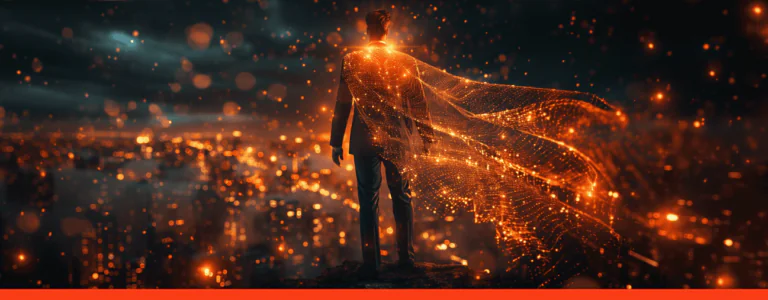How To Build an IoT Application – The Challenge of The Future

Key takeaways
-
IoT shows a great potential economic impact of $3.9 trillion to $11.1 trillion a year by 2025 and has already found its application in almost every industry.
-
You should carefully approach building each layer of an IoT solution (hardware, protocols, IoT cloud platform) your application will be based upon. Find out how to do it right and what factors to consider when working on each layer. Read what architecture and tech stack are most appropriate for IoT mobile app development and web application development for IoT.
-
There are plenty of end-to-end IoT platforms on the market to create an app for IoT. The choice of the right one should be based on its capabilities, communication protocol, and products it offers. Browse through the leaders of the IoT cloud-based platform market and evaluate their strong sides to make the final decision.
-
Scalability, security, and technological inconsistency are the challenges many stumble upon during the development and further upgrade of their IoT projects. We’ll take them one by one and discover a workable solution for each of them.
-
Read about a real-world use case of the IoT solution that turned out to be a great success.
What is IoT, its components?
Could you imagine how you are woken up by the sound of your favorite tune while the curtains open and sunshine lit your room? You slept well and know everything about your health condition as multiple detectors inserted in your bed measured your heart rate, blood pressure, and the depth of your sleep. After having your breakfast, you don’t have to go to the garage and start your car. The car is already waiting outside.
When you come to your office, you don’t have to pass the security officer. No keys, no locks. The doors open automatically after scanning your face and compare it to your biometric data. A bit futuristic reality? Not at all. Just an ordinary day of an ordinary man in the near future. And it will happen with the already well-known technology that is transforming the world now — the Internet of Things.
IoT has already taken its place in every vertical niche, and it is expected there will be 30.9 bln devices connected to IoT by 2025, which would overcome the number of people living on earth today approximately 3 times.

So what is IoT at its core? It’s a system of physically connected devices that exchange information via the Internet with further data aggregation, processing, and analysis, which brings businesses production automation, decreased costs, and maximized profit.
However, what all IoT systems hold in common are 4 distinct components:
1. Hardware
It consists of various devices such as sensors, chips, measuring appliances, etc. Usually, the equipment is provided by third parties, but it can be custom-made, which depends on your project. Selecting hardware is a crucial stage for the IoT-based system because it should comply with the required performance, be compatible with the operating environment and applications.
2. Network
Links all IoT devices within the system. The connectivity methods vary and be it MQTT, HTTP, LPWAN, LAN for stationary devices, wireless cellular, satellite, WiFi, or Bluetooth; each has pros and cons of bandwidth, a distance of the connections, and power consumption that must be evaluated to fit your case scenario.
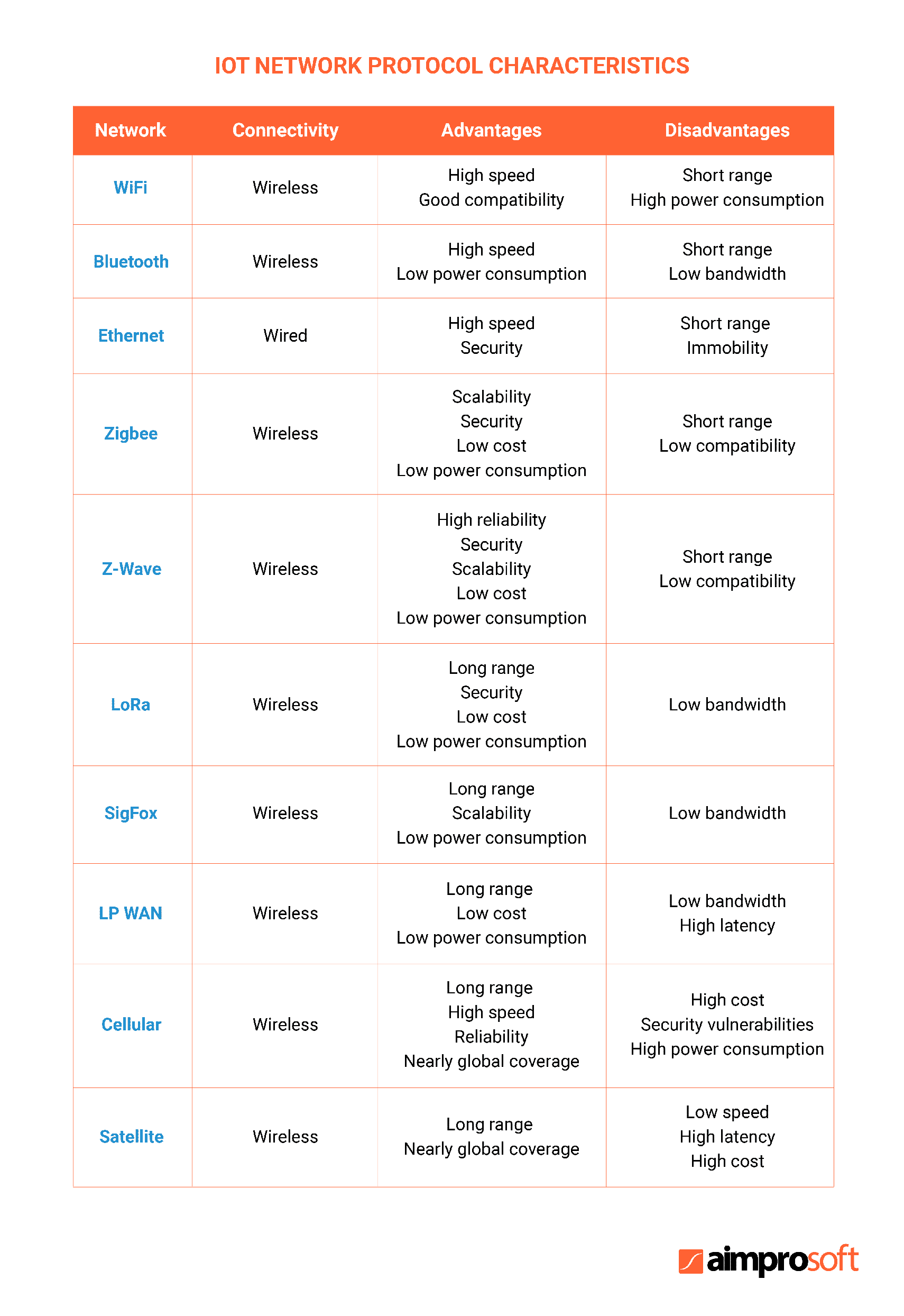
3. Computing servers
Without the cloud, it’s hard to manage the flow, storage, and processing of such a huge amount of data that IoT produces. However, the decision to place your computing powers into the cloud should be properly weighed up because in some cases, for example, government ones, the unfortunate interruption can cause mess and massive reputation loss. For such reasons, it makes sense to build up your own data center.
4. Software
IoT software is represented by embedded and end-user applications. The latter can be web, mobile or cross-platform, which depends on your IoT project purposes. It is developed for the users to interact with the system. Basically, it is like a dashboard that shows the collected information from sensors via the interface and provides the ability to manipulate the system by setting commands. Embedded software is implemented in the devices for their proper functioning and control. Such software is task-specific, performs in real time, and requires minimal user interface as they don’t interact with it directly.
All the mentioned IoT layers are irreplaceable for any IoT system, so we’ll turn to them later to clarify the sticking points you may experience when building your app.
IoT in web and mobile app development
An end-user application is like a pilot cockpit: it is senseless to build up your IoT system without it. Such an app provides your users with a complete view and control over the connected devices. So before making a choice what to develop — a web or mobile application, or probably both, consider the following factors:
Mobile phones have 2 notable advantages for IoT use:
- They are loaded with sensors, so can be easily connected via WiFi or Bluetooth.
- Mobile phones provide users with remote access to the services.
In addition to this, the number of smartphone owners worldwide has reached 3.6 bln by 2023 and is expected to amount to 4.3 bln by 2023. So such wide-spread availability of mobile devices provides great opportunities for IoT development in many vital sectors:
- healthcare;
- smart homes and cities;
- transportation;
- manufacturing, etc.
A decision of web application development for IoT depends on your specific project requirements and the business sector the app is developed for. For example, a web-based UI will be sufficient for the industrial appliance, but an IoT mobile app development will be needed for a smart home solution to control home environments.
What niches can IoT app be used in?
Here you can see the extended list of niches that have the most potential for IoT integration.
1. Healthcare
Internet of Things in healthcare provides high value for all stakeholders. Diverse hardware like wearables, microscopic sensors, or scales for weight measuring ensures precise monitoring of patients’ condition, which allows taking timely prevention measures, setting precise diagnosis, increasing patients’ satisfaction, and improving overall treatment efficiency. Medical organizations, in turn, can significantly reduce their costs by tracking location and controlling the operation of their equipment as well as staff involvement.
2. Logistics
Such large companies as DHL and A.P. Moller-Maersk have already reaped benefits from the integrated IoT solutions. The sensors installed inside DHL’s trucks and Maersk’s fleet containers track position, humidity, the temperature of the cargos, vehicles’ best routes as well as deliveries in real time. It allowed both companies to decrease transit times by half, enabled managers to control deliveries, which took their customer experience to a new level.
3. Automotive
We connect from Volkswagen AG offers its users online anti-theft alarm, roadside assistance, real-time traffic information, and many more. However, IoT applicability in the automotive industry is much wider and can embrace the whole transport infrastructure. For instance, vehicles can share data about their location and speed, which prevents accidents and facilitates smooth traffic flow. With mobile apps, pedestrians can connect with the walking system for changing traffic signals to cross a road, locate nearby taxis and their arrival.
4. Retail
38% of customers claim they won’t buy from a retailer again if they had some negative experience with them before. The remedy for the situation is an improvement of order fulfillment — smart organization of product movement from suppliers’ warehouses to the door of a customer or store shelves. With smart sensors or RFID tags, you can monitor the storage conditions, location, and timely delivery of goods.
IoT technology also makes it possible to organize a warehouse by controlling inventory levels to prevent stock-outs or overstock. Moreover, with data collected from an IoT system, the customer store journey gets optimized via self-checkout when sensors let people leave the location without queuing.
5. Manufacturing
By employing a network of sensors, industrial IoT collects data to predict and quickly solve production problems such as machine downtime, anomaly, or breakdown. It helps change manufacturing processes and transform data into valuable insights about manufacturing operations and plant KPIs.
If a plant is located in another country or city, the difficulty is hidden in maintaining the manufacturing standards. Effective monitoring of material testing, operating and condition parameters, their compliance with the set standards are ensured by the embedded IoT system into the remotely located shop floor infrastructure.
6. Smart homes
Using IoT apps, homeowners can set full control to their properties by monitoring other people’s presence in the home and setting locks. They can also economize on public utilities by monitoring energy and water consumption, and enhance their living convenience, for example, set brightness and warmth to their room, record a TV show, or adjust background music.
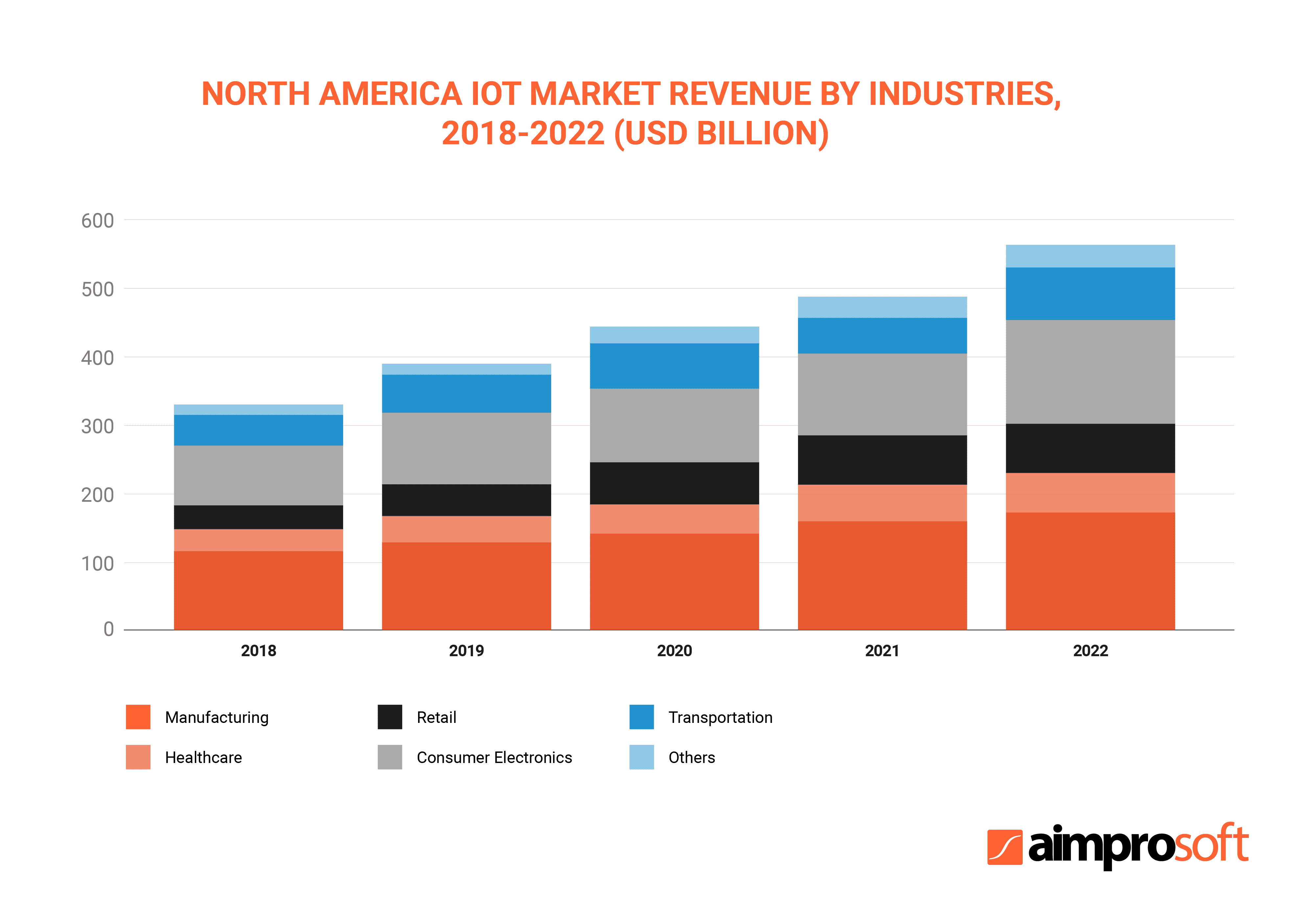
The examples of successful IoT solutions
To make an IoT app thrive, let’s learn from 4 successful examples of IoT solutions that lead the market. They are from different business sectors, but if you take a closer look, you’ll see there are two things that unite them — the concept and ambition to grow. It doesn’t mean you should go global in a blink of an eye; it’s more important to take small steps in the direction of steady growth.
| Name | Amazon Go Grocery | Nest | Zubie | Real Time Location System (RTLS) by CenTrak |
|---|---|---|---|---|
| Industry | Retail | Smart home | Logistics | Healthcare |
| Purpose of IoT solution | Creation of a grocery store that offers Just Walk Out Shopping concept. | Helping the users better manage their homes. | Optimizing users’ business by tracking their entire fleet, protecting their vehicles, ensuring maintenance and driver safety. | Helping healthcare organizations eliminate issues of patient care quality, facility safety, staff satisfaction, and workflow inefficiencies. |
| App’s main features | – Sign in; – receipt formation; – payment via Amazon account. | – Remote arm and disarm home security system; – remote temperature setting; – setting energy consumption schedule; – setting of the auto-lock door; – security alerts, etc. | – Vehicle location management 24/7; – driver behavior analysis; – vehicle health management; – gas, insurance, and maintenance savings with Zubie Perks; – integrations for tracking expenses, trips, and setting up custom alerts, etc. | – Real-time tracking and management of medical equipment; – tracking and management of patients and medical staff; – compliance reporting. |
| Owner | Amazon | Google Nest | Zubie | CenTrak |
| Mobile/web | Mobile | Mobile, tablet, wearable, TV, or web | Mobile and web | Mobile and web |
| Price | Free | You need to purchase the Nest smart device(s).To view video saved in the cloud after the end of the trial period (30 days), the user should purchase a Nest Aware subscription. The price depends on the region a user lives in, i.e., for the USA, it will be $6 per month and a $60 yearly fee. | Subscription-based model.The price for 1 month varies according to a 1, 2, or 3-year subscription. For ex., if a user subscribes for 1 year of the Zubie fleet connect program, a monthly plan will start from $18 per month. | Depends on a particular project. |
| Reason for choice by users | – Cashless, cashierless store without lines; – you buy quicker than in the other stores. | – Well-designed suite of smart devices; – creation of a smart home controllable ecosystem; – the ability to monitor and manage all of these devices with your smartphone via the app; – ability to save on heating and electricity. | – Business model includes 2 beneficial options: * for business fleets; * for rental fleets; – easy and quick installation of Zubie devices; – expert insight into the fleet or rental business via gathered data for more informed business decisions. | – Improves healthcare facilities workflow; – ensures patient care; – provides asset tracking; – ensures hospital-acquired infection control; – provides compliance reporting; – reduce costs. |
Of course, more and more solutions spring up in the IoT market. But time waits for no man, and to become the example of success tomorrow; you should learn how to approach IoT solution development today.
How to create an IoT application?
- Hardware to develop an IoT application
- Protocols to create an IoT app
- Platform to build an IoT application
- Internet of Things app development
Before the Internet of Things app development, you need to build up the basic layers of IoT architecture that rests upon:
- hardware;
- IoT protocols (data and network);
- IoT ready-made cloud platform if you do not choose to build everything from scratch.
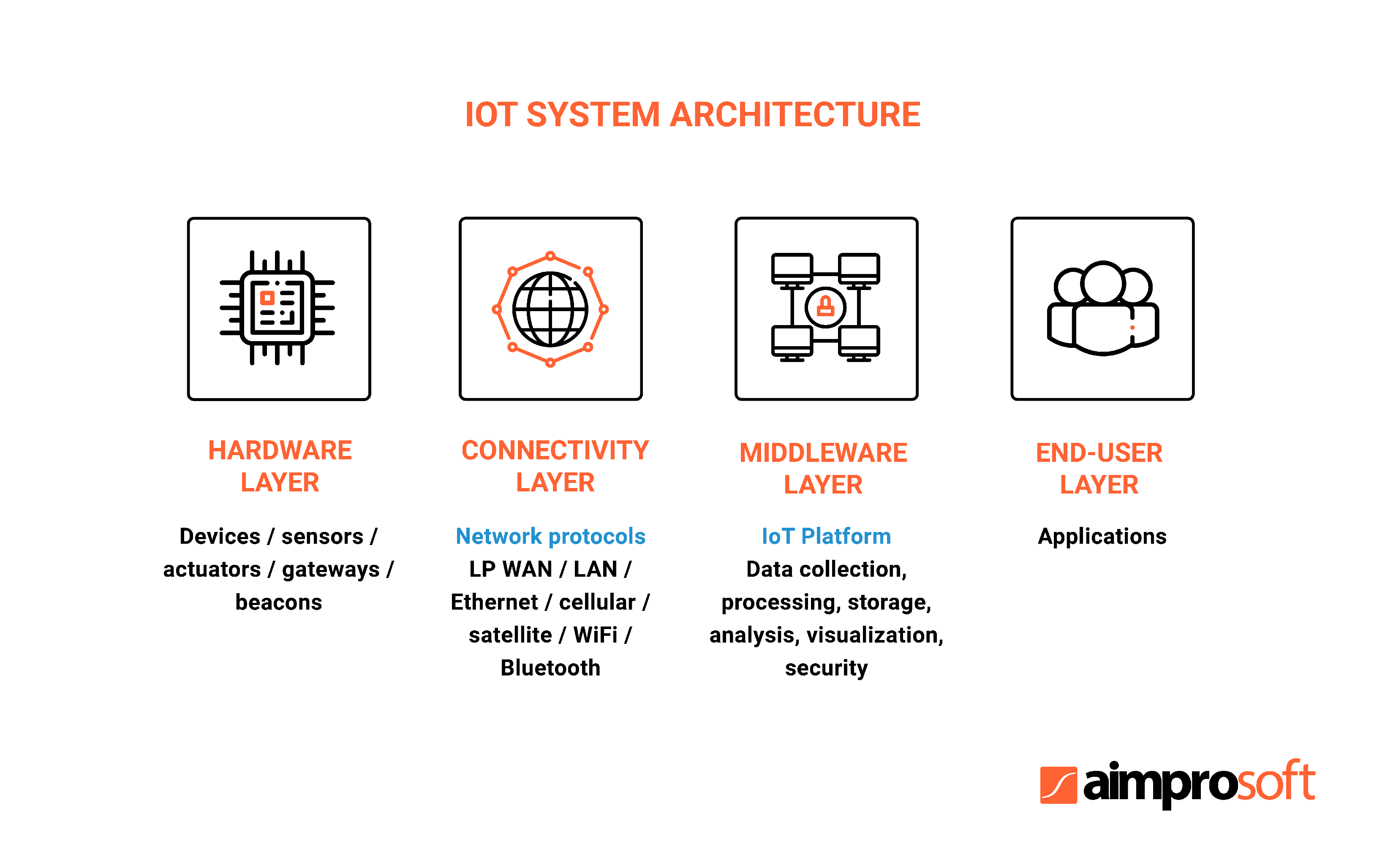
Hardware to develop an IoT application
If you don’t produce hardware, you’ll need to choose it from a third-party manufacturer. To make sure the hardware supports the smooth functioning of your IoT system, its characteristics should meet your project requirements in terms of:
- hardware size/weight/dimensions;
- number of devices required for your project;
- operation environment (indoor/outdoor/used in water);
- power consumption method;
- connection protocols: WiFi, Bluetooth, cellular, Ethernet, P2P, etc.;
- certification and standards applied in the country you plan to market your product;
- type of sensors;
- processing capacity;
- type of display to show the information;
- product design and appearance.
Protocols to create an IoT app
They send data from sensors, devices to mobile or web applications and back.
Protocols are divided into 2 categories:
- IoT data protocols (app layer) are used to connect low-power IoT devices and provide communication with hardware on the user side. They are represented by MQTT, CoAP, HTTP, WebSocket.
- Network protocols (physical layer) that connect devices over a network: LPWAN, LAN, cellular, satellite, WiFi, and Bluetooth.
To make the right choice for your IoT project, you should carefully approach such characteristics of the IoT protocols:
- distance of the connections;
- device power consumption rate;
- connection speed.
Platform to build an IoT application
IoT platform serves as a middleware that manages the interactions between a user application and remote devices.
Such platforms cover the following 3 major blocks of services:
- device control and monitoring, security and firmware updates;
- data acquisition, transformation, processing, and storage;
- event-driven logic, analytics, and visualization for Internet of Things app development.
So an IoT platform significantly simplifies and speeds up IoT solution development by providing the generic layer your application is based on. However, the decision to buy ready-made IoT platform services or develop the whole IoT system from scratch depends on multiple factors such as the amount of data you are going to stream, process, and store, data processing speed, safety, scalability, etc. The list goes on depending on the specificity of your project. Another influencing factor is the price, as it may appear too high to make economic sense in the case of a large project with a sheer volume of data.
Let’s assume you don’t leverage IoT platform services and start development from scratch. Then be ready to carefully deliver on such important areas:
-
Tech stack. Here the programming language longevity and popularity come into play. It means the chosen languages should be supported by a wide community of developers and provide for a big choice of skillful staff.
You should also carefully decide between various frameworks and libraries as there can be some inconsistency cases between them. For instance, you can select both asynchronous web and database synchronization frameworks. As a result, the web framework capabilities will be diminished by the database framework’s limitations, which will reflect in slower application performance, higher memory, and CPU utilization.
If you have a hard time defining the right tech stack for your IoT project, call us for professional consultation
-
IoT solution scalability. An important issue because your IoT system should operate reliably under increased loads to address end-user needs.
-
Security. To escape data security breaches, you’ll have to protect each of the IoT layers:
-
For hardware, it’s advisable to apply device identification and authentication, segmenting and centralizing, data encryption at rest and during transmission.
-
The network can be protected by segmentation, pairing, installation of additional thresholds and filters, firewalls, cryptography, authentication, and authorization of debug ports.
-
Data encryption is a must-have for IoT Platform. However, if you use a ready-made IoT platform, data security and protection are already included in its services.
-
The main security measures to build an IoT app are authorization and multi-factor authentication, antimalware systems use, in-time updates and patches of all libraries and frameworks, use of secure protocols for inter-service communication.
-
-
Cloud. You should conduct thorough research to carefully examine the cloud data governance, a unique bundle of services and pricing for different products, certifications and standards, performance, disaster recovery, migration support, and exit provisions.
Another decision to make is whether to place your data into the cloud or on-premises. For some scalable and public-relevant IoT cases, it makes sense to build up your own data center and IoT platform from the beginning. The solution can be a private cloud architecture where the services exist entirely in on-premises cloud environments. You can lease a cloud server from a hosting company (Oracle, Hetzner, etc.) and maintain full control over your servers. The software vendors like Aimprosoft can help you with the choice of a reliable server provider and cloud deployment.
Internet of Things app development
The success of any kind of business — a startup or well-established enterprise rests on the three pillars:
- user ability to effectively cope with their tasks;
- app capability to grow along with the increasing number of IoT users;
- the ability of developers to modify the app easily.
You can reach the desired success on the condition the architecture of your app is well-designed.
How to develop an IoT app architecture
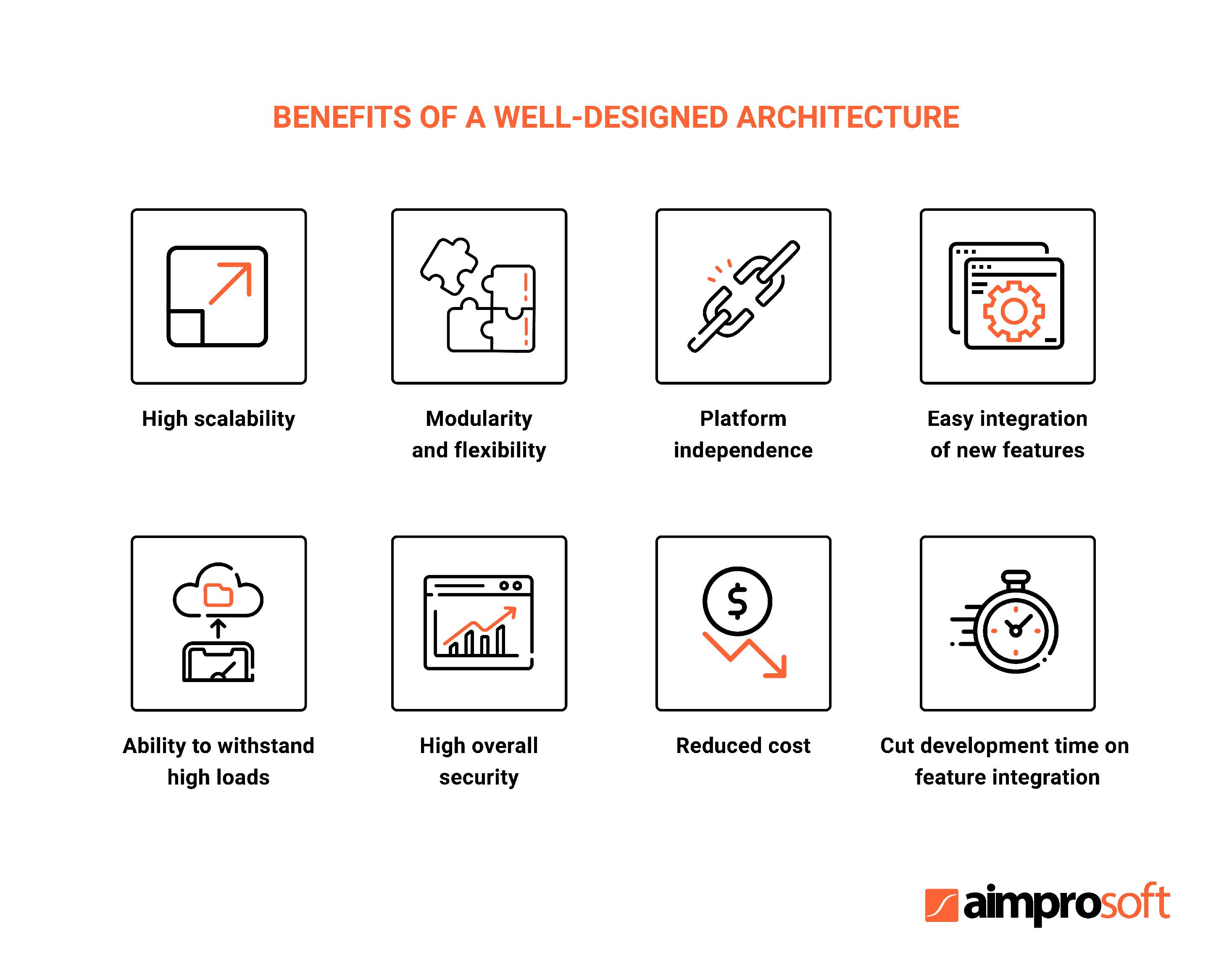
We suggest the microservices architecture to make an IoT application. That will allow dividing any complex application into parts that will be responsible only for one block of functionality. When your developers add a new block to develop an IoT app or modify another, they won’t affect and interrupt the work of the whole system. The result is highly beneficial for business as you build an IoT application that will be scalable, flexible, and provide space for growth.
Tech stack to develop an IoT app
The choice of programming languages and appropriate tech stack to create an app for IoT should depend on:
- language popularity (how big a community and tools are around it);
- maturity;
- safety;
- language ecosystem of libraries, frameworks, and tools;
- licensing fees for proprietary technology;
- ongoing payments for the software infrastructure;
- ability to accommodate the required performance.
Here, we share a table with the most commonly-used technologies to build an IoT app’s frontend and backend:
| Database |
SQL: MySQL, Oracle Database, PostgreSQL, Microsoft SQL Server NoSQL: MongoDB, Apache Cassandra, AWS DynamoDB, Apache HBase, Google Cloud BigTable, AWS Timestream |
| Backend |
Languages: JavaScript, Python, Go, Rust, Forth, ParaSail, Java, Ruby, etc. Frameworks: Spring, Play, Quarkus, Django, Flask, Ruby on Rails, Sinatra, Cuba, Rocket, Actix, Tide, etc. |
| Frontend |
Web languages: JavaScript, TypeScript, Elm Frameworks: Angular, React, Vue.js, Meteor, NestJS, FeathersJS, TS.ed, etc. Mobile languages: Android: Java, Kotlin iOS: Swift Frameworks: React Native, Material UI, Amplify |
Now let’s turn to the ready-made platforms to evaluate what tools and services they provide to simplify the IoT application development process and ensure quicker time-to-market. To make the right choice for Internet of Things app development, you have to take into account what cloud services you already use (if any) and consider the capabilities that differentiate the IoT platforms from the competition.
The platforms for developing IoT solutions
Please note that we listed only the core capabilities of the IoT leading players; the list may be extended:
| IoT platform name | Communication protocols | Platform capabilities and products | What differentiate it from the other platforms |
|---|---|---|---|
| Google Cloud IoT Core | MQTT, HTTP | 1. Secure device connection and management.2. IoT data collection, processing, analysis, and visualization. 3. End-to-end security using asymmetric key authentication, device ownership verification. 4. Availability of Google services (Big Data analytics and ML services, Google Maps Platform). 5. Horizontal scaling of Google Cloud Platform without up-front software installation. 6. Offline operation capabilities for resource-constrained devices. 7. Dashboards and reports creation for real-time metrics. | 1. Easy process of registration of IoT devices and fast IoT deployment.2. An extensive combination of tools and services for efficient data connection processing, storage, and management. 3. Ability to process and analyze data both at the edge and in the cloud. 4. Highly performing data storage. |
| AWS IoT Core | MQTT, HTTP, LoRaWAN, MQTT over WSS, HTTPS | 1. Availability of a bunch of Amazon services for real-time data processing and visualization.2. Profound data and device security via end-to-end encryption, automated configuration, authentication, and granular permissions. 3. Edge computing support. | 1. Easy interaction of different services via expertly built-up pipelines of calculations and data transformations. |
| Azure IoT Central | MQTT, AMQP, MQTT over WebSockets, HTTPS, AMQP over WebSockets | 1. Building scalable solutions faster with IoT Plug and Play.2. Device connectivity and management with Azure IoT Hub. 3. Multi-layered security and threat intelligence for IoT solutions. 4. AI, third-party services, or your own business logic deployment on IoT edge devices. 5. Business results evaluation and insights presentation to decision-makers via Microsoft Dynamics 365. | 1. Rapid building of enterprise-grad IoT apps on specially designed, scalable infrastructure.2. Complete tutorial materials for starting IoT solution development. 3. Flexible pricing policies fit for different size businesses. |
| Particle | CoAP | 1. Pre-integrated and pre-certified hardware (open source hardware, development kits, hardware module products, asset tracking devices).2. Asset tracking system. 3. Data management dev kit (data streaming, Open Cloud APIs, integrations). 4. EtherSIM (self-optimizing cellular connectivity built into your device). | 1. Reach Particle devices’ functionality.2. Well-designed device security. 3. A good feature set for building powerful applications. 4. An active and supportive community that offers timely assistance whenever it’s needed. 5. Explicit and easy-to-understand technical documentation. 6. Great APIs for integrating with third-party services. |
What challenges can be faced?
Building an IoT solution is a complicated process, even if you develop the project on top of an IoT ready-made platform. Let’s pinpoint the most common challenges IoT adopters face to avoid them in the future:
| Challenge | What you may face | Solution |
|---|---|---|
| Protocols diversity | There are different communication protocols used for multiple IoT devices. So when you integrate devices into your IoT solution, the difference in their communication protocols can lead to complex and prolonged data aggregation and finally result in slowed internal processes. | You should carefully select the range of protocols that best suits your project requirements, check their interoperability and compatibility with the cloud. |
| Internet disruption | If in many cases, Internet disruption is an unpleasant but “can live with it” situation, in the case of IoT connected devices, it may be disastrous. | Unfortunately, Internet uninterrupted connection does not depend on you. However, what can be done — enable efficient device switching to offline mode without violation of data transmissions. |
| Scalability | You may experience difficulties when growing the number of connected devices and sensors into a rolled-out project with high capacities. | All the layers of your IoT system should be scalable. To ensure that, conduct an in-depth discovery phase to define the real scale of your idea and the volume of resources needed. As a result, you’ll be able to select the proper hardware, IoT ready-made platform, and app tech stack, which will offer you room to grow within your budget. |
| Security issues | 1. Vulnerabilities in devices, which offer many entry points for penetration. Because an entire IoT system connects a lot of devices, cybercriminals can connect just to one of them and harm the whole IoT system. | 1. Segment and centralize the devices to monitor and control them carefully. You can also use IoT aggregation hubs to enhance device control. Use endpoint security software and regular backups. Finally, work out a recovery plan. That will pay off. |
| Hackers can crack devices through hardware attacks, medjacking or high-jacking, modifying firmware via debug port. Moreover, a microchip can be injected with the malicious circuit at the initial stage of creation. | Protect your debug port by access the authentication and authorization system (use password or pin code) and connect to the router via your own WiFi or patch. It’s advantageous when the debug port is additionally protected by an electronic digital signature. Implementation of monitoring processes in the chips to track suspicious behavior can be helpful as well in this case. | |
| 2. Network vulnerabilities due to which any server connected to an organization’s internal network can be seen and penetrated to reach the whole network. | 2. Provide network segmentation by splitting it into subnets. Thus, you’ll divide traffic into external (for guests) and internal (for authorized users). Moreover, take care that each component of your network (from sensors to the servers and to the database) is protected at its own level. | |
| Hackers can make interceptions when information is transmitted to the IoT system, which ends up in data theft. It’s done through a stream of unprotected traffic. | The only way you can fight the interceptions is the encryption of end-to-end communication over networks, i.e., TLS (Transport Layer Security) or other protocols designed for data security over the Internet. | |
| 3. Unencrypted communication between different layers, such as applications, IoT platforms, and databases. | 3. You can solve the problem by data encryption, usage of secure protocols for interservice communication, authorization and multi-factor authentication, in-time updates and patches of all operating systems, libraries, frameworks, and applications. | |
| Technological inconsistency | The smart devices inside a plant facility or a user’s home don’t connect with a developed mobile app or don’t work as a whole system. The cause is the devices were bought from different manufacturers who have their own standards, APIs, and connection protocols. | If you don’t produce and sell devices yourself, buy them from one manufacturer who supports the same standards. Or, if you buy “things” from different manufacturers, check their compatibility. Some of them even provide a list of devices that are compatible with their own products. |
| Blending IoT infrastructure with existing legacy solutions | This situation springs up if you implement an IoT system in the industrial plant environment. Usually, plants accumulate different legacy systems through their operating time, which are not compatible (use conflicting protocols) with each other and the implemented IoT solution. | You can substitute your legacy equipment completely or retrofit it with IoT gateway device(s) and sensors. Be aware that complete substitution of the outdated assets will cost you a penny, be time-consuming, and cause downtime. So the solution often lies in the latter: installation of various IoT sensors on the most critical part of the manufacturing process performed in phases. It will be cheaper and faster. Also, take care that every piece of machinery on a network uses the same protocol. You can ensure it by leveraging a protocol converter that connects to disparate devices with confronting protocols and converts them into compatible with the other devices’ protocols. |
Do you want to know how to develop an IoT app in practice? Then read our IoT use case that turned out to be a real success.
Healthcare IoT security is a complicated issue that gives healthcare institutions a headache. Check our blog post to overcome the tricky system vulnerabilities with ease.
Our experience of internet of things app development
Idea
While every home dweller faces spiralling household energy bills, businesses bear a burden of energy budget pressure that restrains their ability to grow and successfully compete in their domain.
Our client, an energy services provider, came to us with an ambitious idea to change this situation.
He set himself 3 major objectives:
- Deliver the energy to the business sector and homeowners at lower rates; therefore, become a leading energy provider in the market.
- Enable users to lead comfortable lifestyles by managing their home appliances distantly.
- Make positive input on the environment by setting home appliances’ operation according to the air pollution status and reducing energy consumption, thus cutting on carbon emissions.
Task
Aimprosoft IoT development team had to build a smart-home IoT platform that would consist of:
- The embedded software and cloud architecture for the client’s in-house manufactured device — consumption measurement meter.
- Web and mobile applications for users to distantly manage their home appliances and monitor the energy tariffs throughout the day.
- Admin panel for efficient management of the users.
Solution
-
The most complicated task we put a lot of effort into was the creation of embedded software for our client’s internal product called consumption measurement meter. We had to forecast and evaluate the risks that could have influenced the embedded software performance and prevent any possible failure.
A user could buy and implement the consumption measurement meter in their private property or office building. It measured, transferred, stored, and sent energy consumption data of the building to the cloud via WiFi and MQTT protocols with maximum precision in pre-set short periods of time. As a result, we’ve got constantly updated data for better analysis and statistics.
We also developed an app to display the energy consumption, and other runtime data on a pre-installed device LED monitor. It allowed transforming this data in any preferable form — graphs or statistics, in just two clicks.
-
We created the smart ecosystem based on the cloud infrastructure, applying different AWS services, including AWS IoT Core as the main part for the client’s manufactured device. The complex of applications for the smart energy platform released by Aimprosoft had extensive functionality that enabled users to complete a wide range of actions via the web, iOS, and Android apps:
- connect different home appliances like thermostats, boiler systems, inverters, heating pumps, bulbs, etc. into one platform via third-party APIs;
- represent varied types of graphs for:
- *monitoring of electricity tariffs;
- *checking devices real-time statuses;
- *checking energy import and export in the set period of time;
- *checking monthly bills;
- *checking carbon emissions in the environment.
- remotely manage the home appliances by setting commands to them;
- import or export the energy at the most beneficial time.
-
By developing the admin panel, we provided our client with efficient user management capabilities. He could access the users’ statuses, check up the history of their actions, configure the connected devices, set discount terms, process requests for user support.
Results
The IoT project concept had a great outcome and was beneficial for all the participants involved in energy deals:
-
Our client has received a developed from scratch IoT platform that let him provide users with advanced services for smart home appliances control and the ability to add to big dollars for every household and business.

-
Average homeowners and businesses economize on consumed energy and their monthly electricity bills.
-
Sophisticated algorithms calculated by Aimprosoft specialists have let platform users control and reduce their carbon emissions. So the project realization has had a positive impact on the environment.
Are you looking for a development team for your IoT project? Learn what you get if work according to an outsourcing dedicated team model
How much does it cost, and how long does it take to create an IoT app?
The IoT application development is just a part of the whole IoT system. IoT hardware, cloud platforms, storage, embedded software demand significant investment and development time.
Also, there are certain factors that influence the cost of each of them.
Feature scope, technologies used (programming languages and frameworks can be rather sophisticated, so the coding will take more time), cost of third-party services, user interface and user experience complexity, developers’ hourly rate, which depends on their location play their part in the cost formation.
Are you thinking about development outsourcing? Find out answers to any of your questions to come to the right decision
As a full-fledged IoT solution entirely depends on particular project requirements that greatly vary and may last more than a year, we have taken an MVP to calculate approximately what the price tag may start from. This calculation would be a starting point for you to orient how much investment you’ll need.
Please note that we’ve calculated only the lower bounds of the MVP price. At Aimprosoft, we can provide a more precise estimation to make an IoT application based on gathering and thorough evaluation of your requirements and business analysis.
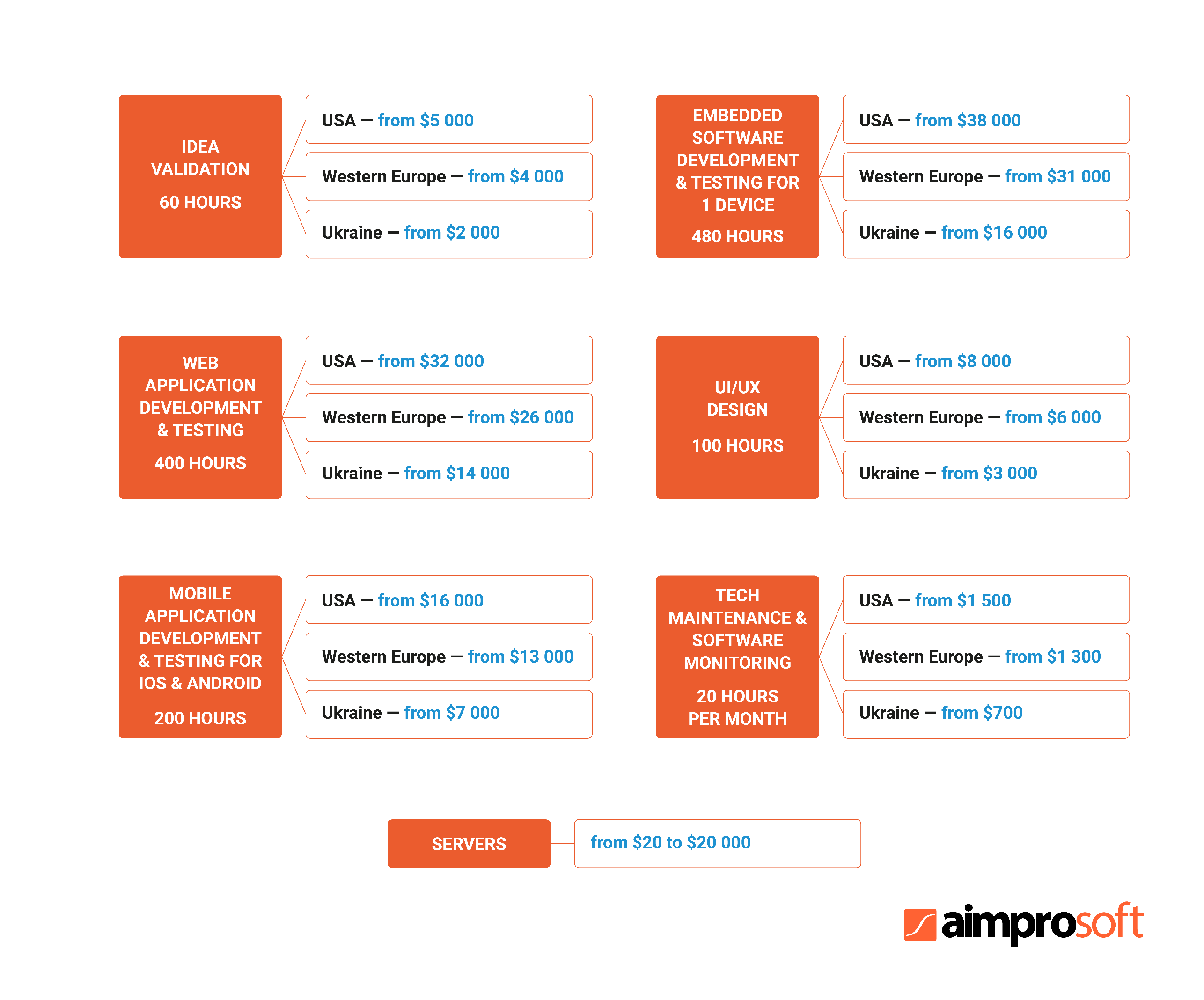
Also, keep in mind one of the most important factors that influence the cost of an IoT platform — the hourly rates of the development team. As IoT is a complex solution that demands knowledge of many software technologies and hardware components, only the highly skilled engineers who have learned IoT the hard way fit for the task. So, on the one hand, the aim is to find skillful specialists; on the other, not pay through your nose, as the IoT projects are mainly long-term and require economy.
Outsourcing is still trending like never before, especially that the COVID-19 lockdown showed the boundaries are rather nominal, and people can effectively communicate on business issues online. So, on average, the hourly development rates in the USA are $80 per hour, while the UK and Western Europe charged $70 and $65. The lowest rates among them with the high standards of education and technical knowledge are inherent to Eastern European countries — hiring a Ukrainian IoT developer will cost you only $35 per hour. Thus, for example, the MVP web application development for IoT in the USA will exceed the Ukrainian price twice, starting from $32,000 compared to $14,000, respectively.
Conclusion
Building an IoT solution requires a fundamental approach, deep knowledge of hardware and software technologies, and considerable expertise. If you have an idea to develop an IoT application, our team of IoT specialists can help you at every stage of your IoT application development process: from cost estimation to post-delivery support.
FAQ
What network protocol should I use to create an IoT application?
There are plenty of network protocols you can leverage to make an IoT app: WiFi, Bluetooth, Ethernet, Zigbee, Z-Wave, LoRa, Sigfox, and many others. Evaluate your project requirements, conditions and select a suitable protocol based on the criteria of range, bandwidth, and power consumption. You can read how to do it correctly in the “What is IoT, its components” section, where you’ll find the table of advantages and disadvantages for each IoT protocol. The “How to create an IoT application” section will help define the main protocol selection criteria.
How to make my IoT project go according to the roadmap and ensure it won’t require any external expenses?
The majority of roadmaps look better on paper than in reality. The cause is that the idea of an IoT project should be thoroughly evaluated for its feasibility. It’s not advisable to underrate the discovery phase of your project as it may appear many things require even deeper clarification and investigation.
Work hard on the discovery stage with your software vendor: they will gather and analyze your requirements to create an app for IoT, conduct deep research and identify a project scope that will result in a more detailed roadmap and an accurate estimate that excludes excess payment.
What are the criteria for choosing the right technologies (which are truly diverse) to create an app for IoT?
Programming language popularity, maturity, safety, an ecosystem of libraries, frameworks, and tools, licensing fees for proprietary technology, and the ability to accommodate the required performance are the key points for choosing an appropriate tech stack for your IoT solution.
Usually, the tech stack is defined in cooperation with your vendor after the discovery stage of your project. We provide our clients with a rough estimate document where the product’s features and the tech stack for their implementation are prescribed. More information you can find in the “Tech stack to develop an IoT app” section of this article.


